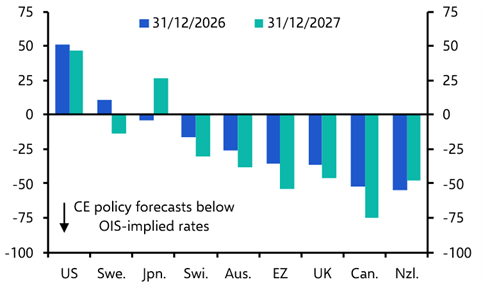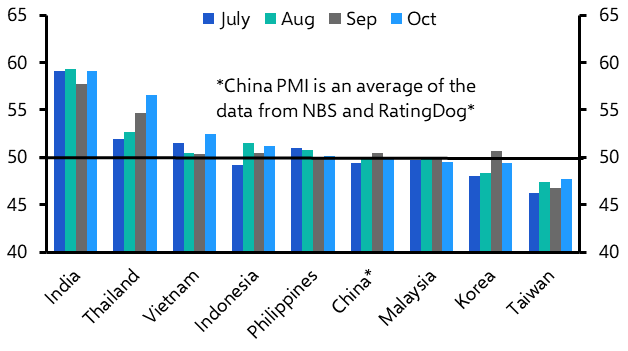We’ve just published our latest Long-term Global Economic Outlook, which provides economic and market forecasts out to 2050. These come with the caveat that the usual uncertainty around forecasts increases the further one looks ahead. Nonetheless, our latest publication challenges the consensus in three important ways.
First, in our view it’s too soon to give up on the possibility of a technology-driven pick-up in productivity growth. As I noted last week, one of the puzzles of recent years has been that, despite the rapid development of new digital technologies, productivity growth has remained unusually weak. There are plenty of reasons for this, but one that provides some cause for optimism is that it simply takes time for infrastructure and processes to adapt to new technologies in order to harness the benefits to productivity growth.
Admittedly, there’s not much evidence that we’re on the cusp of such a breakthrough and, for the time being, the most likely outcome is that productivity growth (and thus economic growth) remains subdued. But that doesn’t mean that it won’t happen at all.
The bigger concern in our view is not that new technologies won’t deliver a pick-up in productivity growth but rather that when the pick-up arrives it will be unevenly spread. In particular, while most developed markets should start to see an improvement in productivity growth by the end of this decade, productivity growth in most emerging markets will continue to be held back by a variety of structural problems. These structural problems are most obvious in China but are also evident in other large emerging economies including Brazil, Russia and Mexico.
The challenges facing EMs are compounded by the second theme of our Long-term Outlook, which is that the world has reached peak globalisation. In fact, a period of de-globalisation is increasingly likely. This is a subject that I’ve covered in considerable detail in previous notes and I won’t rehearse the arguments again here. But the key point is that, while last week’s signing of a “phase one” deal between the US and China was clearly good news, the tariff war was only one aspect of a more fundamental fracturing in the relationship between Washington and Beijing, the consequences of which will play out over several years and in areas as diverse as technology, security and investment. The immediate threat to economic growth is small. But a rollback of globalisation would counteract any technology-driven pick-up in productivity growth over the next decade or so, and the ramifications would once again be most severe for emerging economies.
The third and final theme of Long-term Outlook is that greener growth doesn’t necessarily mean slower growth. Most analyses start from the assumption that there is a trade-off between economic growth and efforts to tackle climate change. We disagree. As we argued in a recent piece, there is no reason to believe that taking steps to combat climate change necessarily requires sacrificing economic growth. Instead, the bigger risk in our view is that the response by world leaders is too timid, in which case emerging markets would again be the hardest hit.
The upshot of this is that, while there are good reasons to expect productivity growth in developed markets to accelerate over the next couple of decades, there are also reasons to expect productivity growth in emerging markets to slow. So while incomes in EMs will continue to converge with DMs, they will do so at a slower pace than they have over the past twenty years or so. If we’re right, then the world in 2050 will look very different to what the consensus expects. While Italy will lose its place in world’s 10 largest economies, France, Germany and the UK will keep theirs; while India and Indonesia will shoot up the rankings they will be the exception rather than the norm in the emerging world; and – perhaps most notably – the widespread assumption that China will overtake the US as the world’s largest economy is likely to be proved wrong.
In case you missed it:
- We’ve published several pieces deconstructing last week’s trade deal, including an assessment of the implications for the US, Chinese and global economies.
- Our UK team explains why, while it’s a close call, the most likely outcome of this month’s MPC meeting is that interest rates will be left unchanged.
- Our Chief Emerging Markets Economist, William Jackson, explains why interest rates in EMs are likely to remain lower for longer.




